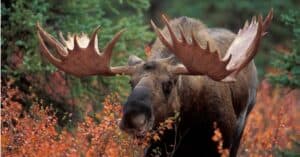Shasta Lake, also known as Lake Shasta, is a man-made reservoir in Shasta County, CA. With a surface area of around 30,000 acres, this body of water brings plenty of flora and fauna to the region. There aren’t any creatures living in Lake Shasta besides fish.
While some other critters live near the lake, it’s primary fish living in it. From beautiful rainbow trout to various types of bass, it’s time to shine a light on these aquatic animals.
1. Trout
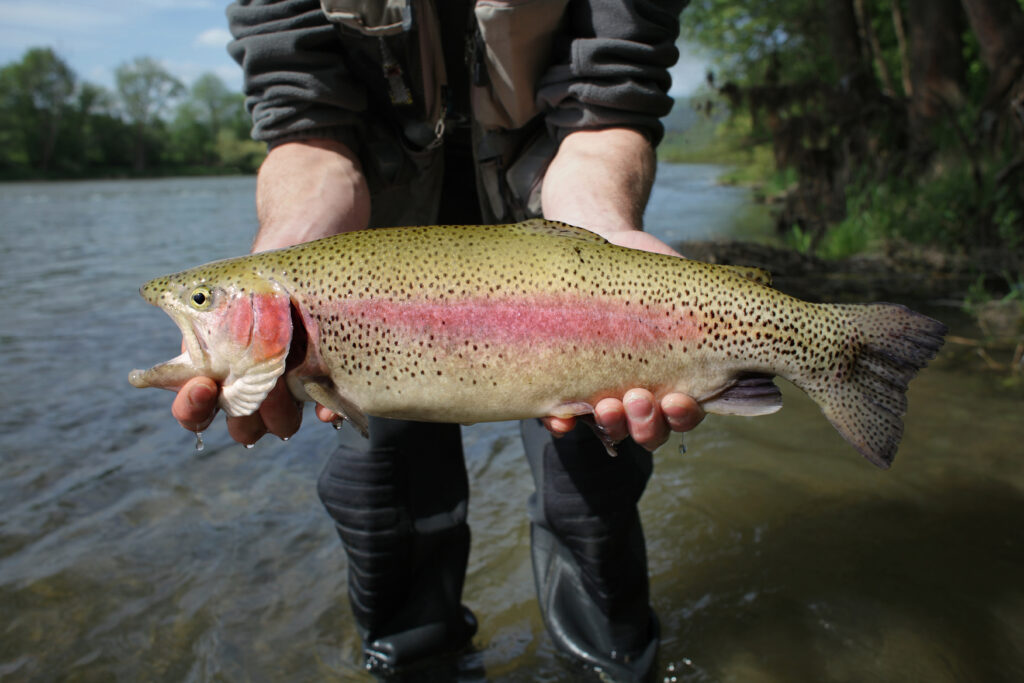
The light red marking across rainbow trout makes them easy to identify.
©pictoplay/Shutterstock.com
Anglers know that trout fishing on Shasta Lake in the summertime mornings is a blissful experience. Shasta Lake is home to an abundance of brown and rainbow trout. Brown trout is a common and widely spread fish that derives its name from its olive-colored flanks that are adorned with numerous black, brown, and red markings.
They are widespread game fish that can be found all over the world. Brown trout typically reach lengths of 15 to 22 inches and weights of between one and five pounds, based on a number of variables primarily linked to genetics and environment.
One of the best sports fish in California is rainbow trout, which are salmon-family species with ray fins. The name “rainbow trout” comes from their stunning multicolored coloring. Their entire bodies are green, blue, or yellow in color, with black spots extending across their backs and a straight pink-red stripe that runs from the gills to the tail.
On their bellies, their color fades to a gleaming white. Although they are often considerably smaller, they can grow to be 45 inches long. They have a maximum weight of 50 pounds, but eight pounds is more common.
2. Salmon
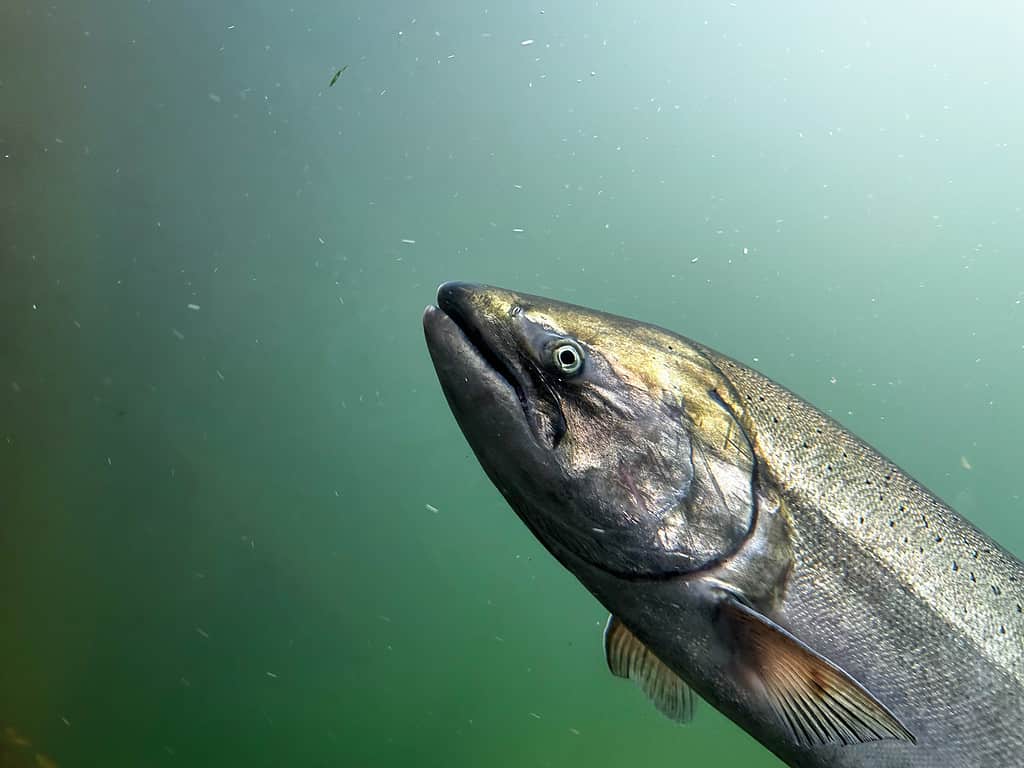
Due to their impressive size, another name for Chinook is king salmon.
©Heather Ray/iStock via Getty Images
In Shasta Lake, king salmon are possibly the most desired fish. When fed as fingerlings, juvenile Chinook salmon are among the toughest fighters in freshwater, reaching a maximum weight of 10 pounds or more.
Shasta Lake is known for producing some of the largest landlocked king salmon in this part of the country, despite population fluctuations over time. These are just another one of the creatures living in Lake Shasta.
When Chinook are ready to spawn in freshwater, they turn a dark brown, red, or purple color. In males, this coloring shift is very apparent. Although they have a maximum length of five feet and an average weight of 129 pounds, mature fish typically measure approximately three feet in length and 30 pounds.
3. Catfish

Channel
catfish
is the state fish for Tennessee, Kansas, Missouri, and Nebraska.
©Jenniveve84/iStock / Getty Images Plus via Getty Images
Shasta Lake is home to three different species of catfish: brown bullhead, channel, and white. The skin of the brown bullhead fish species is velvety and slick. They can reach a maximum length of 20 inches, but they typically grow to be around a foot long.
Among its most noticeable characteristics is an array of long, moderately thick whiskers surrounding its lips. The fish’s fins have pointed spines that both shield them from enemies and aid in prey capture.
Next, channel catfish have the quirky nickname of the swimming tongue. These creatures living in Lake Shasta have taste buds across their body, the majority of which are located between their whiskers and gills.
The longest recorded length for channel catfish is 52 inches, with a typical length of 22 inches. Lastly, the white catfish has a powerful body and a big head. It can be distinguished from other catfish species by its white chin, which has four pairs of barbels that resemble whiskers at the end.
The species has a white underside and a body that is slightly grayish-blue in hue. Its tail has curved lobes at the end and is somewhat forked.
4. Bass
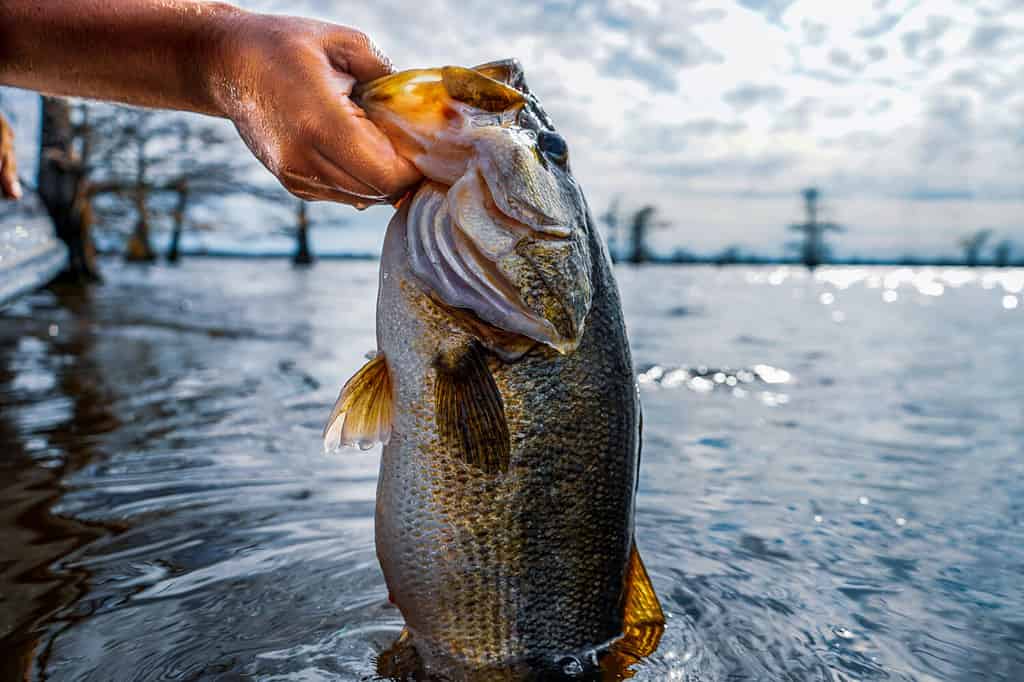
The largest largemouth bass ever caught was over 22 pounds!
©Maclane Parker/Shutterstock.com
Spotted, smallmouth, and largemouth bass are all creatures living in Lake Shasta. The spotted bass, sometimes referred to as the “Kentucky bass,” is similar to the largemouth bass.
Adults can be identified from largemouth bass by their small notch that separates their soft and spiny dorsal fins and horizontal rows of little black dots on the bottom side. A young spotted bass’ caudal fin is tricolored.
Most adults weigh less than three pounds and range in length from ten to fifteen inches. Smallmouth and largemouth bass are two of the most popular game fish in the country. As their individual names suggest, the main difference between the two fish is the size of their mouths.
Largemouth bass have large maws compared to their smallmouth counterparts. Their jaws extend further past their eyes and they have a break between their fins as well. Smallmouth typically measure in between two and four pounds, whereas largemouth bass can weigh up to seven pounds.
5. Black Crappie
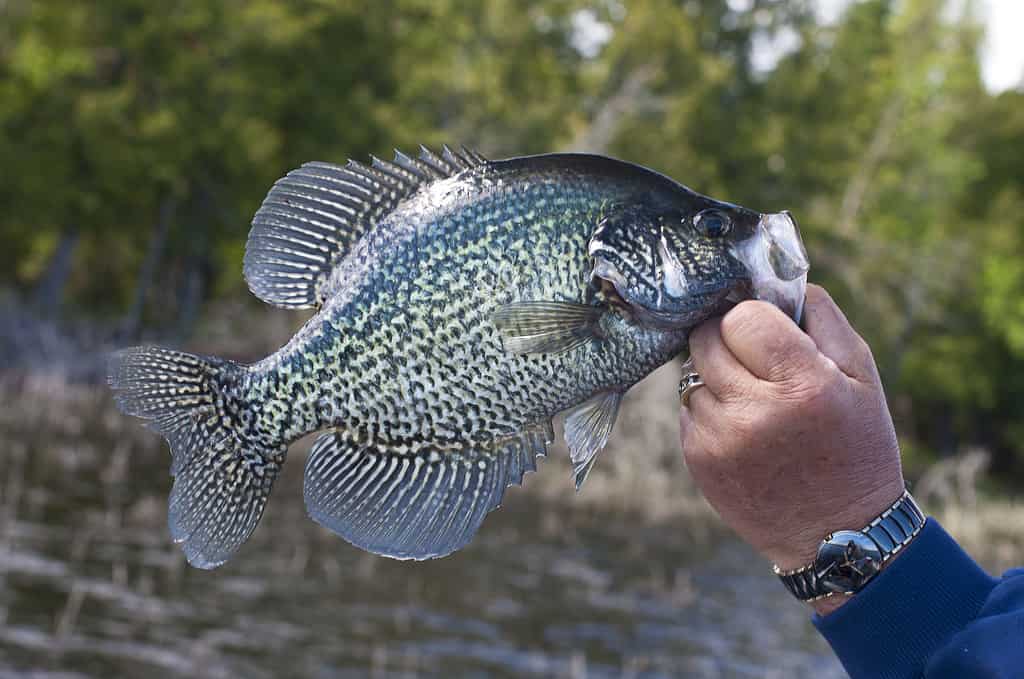
The scientific name for the crappie is
Pomoxis nigromaculatus.©SteveOehlenschlager/iStock / Getty Images Plus via Getty Images
Another creature living in Lake Shasta is the black crappie! These are relatively small fish, weighing less than six pounds and averaging about 11 inches in length. They prefer to live toward the sandy, muddy bottom of Lake Shasta.
The easiest way to identify black crappie is by the number of spines on their dorsal fin. They have between seven and eight spines, whereas other crappies have six. These fish have spots and dots all over their body as well.
Summary of the Creatures Living in Lake Shasta
| Rank | Fish |
|---|---|
| 1. | Trout |
| 2. | Salmon |
| 3. | Catfish |
| 4. | Bass |
| 5. | Black crappie |
Thank you for reading! Have some feedback for us? Contact the AZ Animals editorial team.






